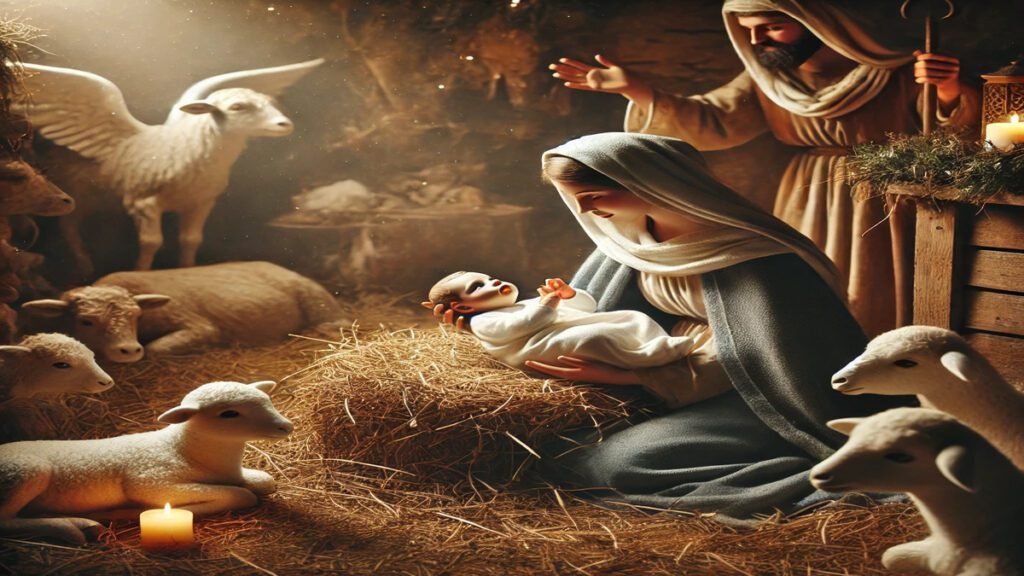The nativity story is one of the most cherished and celebrated accounts in the Bible. We imagine Mary, serene and glowing, cradling baby Jesus under the soft light of a star-filled sky. But as we celebrate the miracle of His birth, an intriguing historical question arises: did Mary, a young Jewish woman of her time, have the assistance of a midwife during that pivotal night in Bethlehem?
Midwives in Ancient Jewish Culture
Midwives were integral to childbirth in ancient Jewish society. In an age without modern medicine, these women were highly skilled in guiding mothers through the birthing process and were often revered for their expertise. The Bible itself references midwives several times, most notably in Exodus 1:15-21, where Shiphrah and Puah courageously defied Pharaoh’s orders to kill Hebrew male infants. This account underscores the vital role midwives played—not just as caregivers, but as protectors of life and faith.
Jewish tradition often emphasized community and mutual support, particularly during significant life events like birth. Childbirth was seen as a divine moment, and midwives were considered God’s instruments in helping bring new life into the world.
Midwives were likely equipped with tools like birthing stools, swaddling cloths, and herbal remedies to ease labor pains and prevent complications. They would often recite prayers or blessings, reflecting the belief that childbirth was as much a spiritual event as a physical one.
The Birth of Jesus: A Historical Lens
The Gospels of Matthew and Luke provide the most detailed accounts of Jesus’ birth. Luke 2:6-7 tells us:
“While they were there, the time came for the baby to be born, and she gave birth to her firstborn, a son. She wrapped him in cloths and placed him in a manger because there was no guest room available for them.”
Noticeably absent from this narrative is any mention of a midwife or helper. However, the omission of certain details in ancient texts doesn’t necessarily imply their absence. Luke’s account is succinct, focusing on the theological significance of Jesus’ birth rather than its logistical details.

Could Mary Have Had Help?
Given the cultural context, it’s plausible Mary had assistance. Despite the lack of direct mention in the Gospels, several factors suggest a midwife might have been present:
- Customary Practice: It was almost unheard of for a woman to give birth alone in ancient Jewish culture. Even if Mary and Joseph were strangers in Bethlehem, the communal nature of Jewish life suggests women in the area might have stepped in to help.
- The Role of Women in Hospitality: Hospitality was a cornerstone of Jewish life. Despite the humble setting of a stable or cave, local women—perhaps the innkeeper’s wife or another resident—may have acted as impromptu midwives.
- Apocryphal Accounts: Early Christian writings outside the Bible, like the Protoevangelium of James, mention a midwife assisting at Jesus’ birth. While these texts aren’t considered canonical, they reflect early traditions and beliefs about the nativity.
Mary’s Perspective: A Young Mother’s Journey
Imagine Mary’s experience: a young woman, far from home, and about to deliver her first child under extraordinary circumstances. Did she feel fear? Exhaustion? Perhaps, she drew strength from the divine promise spoken to her by the angel Gabriel (Luke 1:30-33).
Joseph likely played a significant role, supporting Mary in any way he could. Though not a midwife, his presence and care would have been a source of comfort. His faithfulness and willingness to embrace God’s plan provide a model for modern fathers and caregivers alike.
Theological Significance: Prophecy and Fulfillment
The circumstances of Jesus’ birth—its humility and simplicity—align with Old Testament prophecies, such as Isaiah 7:14:
“Therefore the Lord himself will give you a sign: The virgin will conceive and give birth to a son, and will call him Immanuel.”
God’s choice of a humble setting for the Savior’s birth emphasizes that Christ came for all people, regardless of their social status or circumstances.
Modern Parallels: Midwives of Hope
In today’s world, caregivers—whether professional midwives, nurses, or supportive family members—play a similar role to their ancient counterparts. They bring comfort, guidance, and hope during life’s pivotal moments. Mary’s story reminds us of the importance of community, care, and shared faith.
As we reflect on her journey, we can ask ourselves: how can we be “midwives” of hope, encouragement, and love in the lives of others?
Visualizing the Nativity
Picture the scene: the rough wooden beams of the stable, the earthy scent of hay, the soft breath of animals nearby. Mary, weary but radiant, cradles her newborn son. Perhaps an older woman, with kind and weathered hands, leans in to swaddle the baby, whispering a prayer of blessing. This imagery helps us connect to the humanity of the nativity story while embracing its divine mystery.
Practical Lessons for Today
Whether Mary had help or not, her story inspires us to trust God’s provision and embrace His plan, even in challenging circumstances. Just as midwives in ancient times served as vital caregivers, we, too, are called to be midwives of hope and encouragement for one another.
So, as you reflect on the nativity this season, consider how you can be a source of support and faith to someone in need. Who in your life might need your encouragement during this season of miracles?
References
- Exodus 1:15-21
- Luke 1:30-33; Luke 2:6-7
- Isaiah 7:14
- Protoevangelium of James (Early Christian Apocrypha)
What do you think? Could Mary’s story hold untold details of unsung heroes? Let’s continue the conversation!



